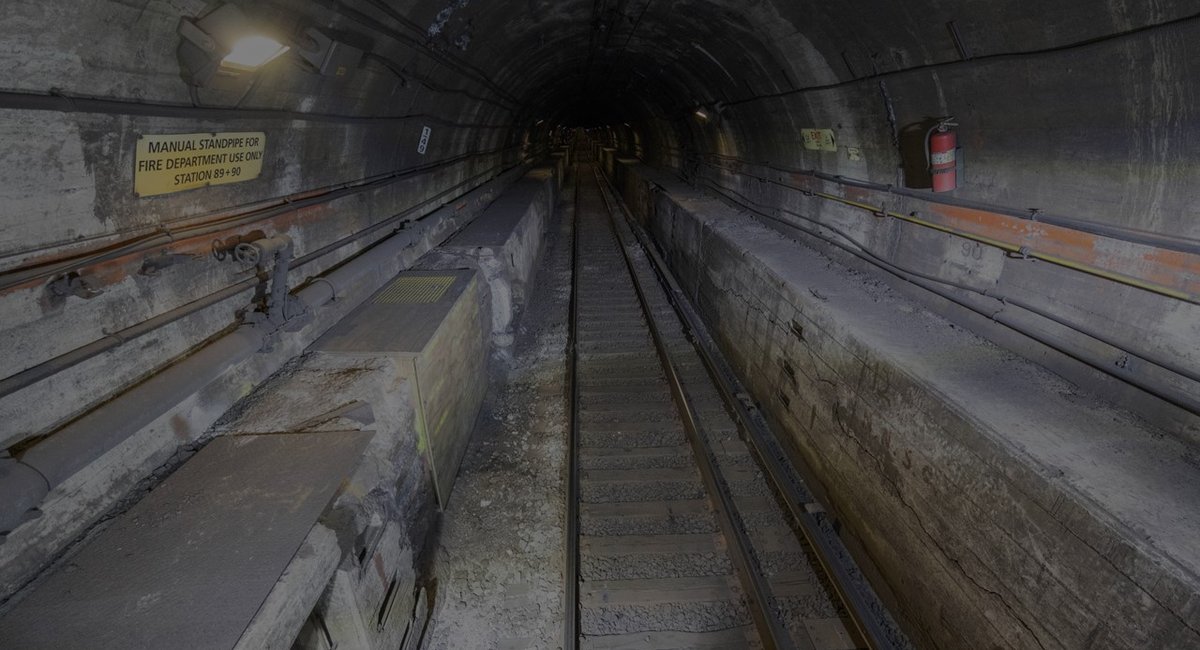Amtrak’s 114-year-old East River tunnels, which are used by hundreds of Long Island Rail Road trains rolling in and out of Manhattan’s Penn Station every day, are slated to undergo years of repairs starting this fall — and experts warn the work could spell big trouble for commuters.
The tunnels are separated into four tubes, each carrying a set of tracks. Flooding from Hurricane Sandy in 2012 damaged two of those tubes, and Amtrak last month inked a contract to rebuild the damaged structures as part of a $1.6 billion project.
Amtrak plans to fully close one tube at a time while crews “demolish all existing tunnel systems down to the liner, before completely restoring both tubes” over the course of three-and-a-half years, the railroad said in a press release. That means that from the fall until at least late 2027, trains moving between Penn Station and Queens will only have access to three tracks underneath the East River instead of four.
The tubes are used every day by 411 LIRR trains, 42 Amtrak trains and dozens of NJ Transit trains that are stored in a train yard in Sunnyside between rush hours. Amtrak officials said the construction would have a minimal impact on transit service.
But the work poses a big risk to commuters, said Larry Penner, a former regional director of the Federal Transit Administration.
“We’re playing Russian roulette with less available service,” said Penner. “Amtrak’s maintaining a huge gamble. It’s a horrible gamble to place on the riders and commuters.”
He added that if a train breaks down in one of the tunnels, all three railroads would have to cut service to fit their trains into the remaining two tubes.
Amtrak spokesperson Kyle Anderson said the work would “not result in a major disruption to LIRR or NJ Transit service.”
MTA spokesperson Joana Flores pointed out that the LIRR has more flexibility since the agency opened Grand Central Madison last year. The new service relies on a tunnel owned by the MTA — not Amtrak — to run trains to Manhattan’s East Side.
Flores said the agency plans to “minimize disruption to the extent possible” when it comes to LIRR trains affected by the tunnel work.
Still, the risk the project will upend train service is well-known to MTA Chair Janno Lieber, who for years urged Amtrak to take a different approach to the repairs and avoid the full closure of a tube.
As recently as 2021, Lieber publicly urged the national rail service to instead make the repairs on nights and weekends — similar to the approach he oversaw in fixing the L train’s East River tunnel, which was also damaged by Hurricane Sandy. The MTA had once planned to fully close the subway tunnel, but in early 2019 former Gov. Andrew Cuomo and Lieber made a last-minute reversal and decided to fix the structure in place instead of rebuilding it entirely.
“It is our hope that the folks at Amtrak will reconsider their position and work with us and others so we can minimize the impact of tunnel work on customers,” Lieber said during a state Senate hearing in May 2021. “The best way to do that is to avoid full closures to the extent possible. When a tunnel is closed, fewer trains can get in and out of Manhattan and there’s less flexibility to recover from delays, making service less reliable — a result that is good for no one.”
Anderson said Amtrak’s review found Lieber’s approach would not be feasible.
“The magnitude of the work is significant and cannot be accomplished on nights and weekend in a repair in place method,” he said. “To rehabilitate the tunnel during weekend or weeknight outages is not productive and will significantly increase the total duration of the construction schedule and cost of the project.”
Penner, the former federal transit official, also expressed doubt that Amtrak would get the work done within its promised window. If the project is delayed, it could cause further problems for the MTA, which aims to use the tunnels for its new “Penn Access” service that would bring Metro-North Railroad trains into Penn Station via the Hell Gate Bridge. The MTA estimates that the new service will launch by the end of 2027, around the same time Amtrak says its tunnel repairs will be finished.
